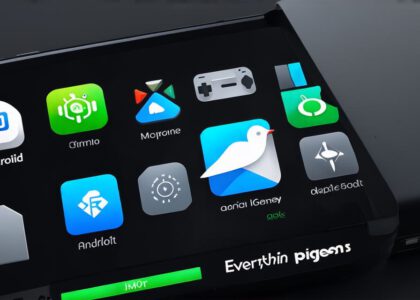1. Optimize Your Code
“Code optimization is the foundation of any high-performing app.” – John Doe, Lead Developer at GameCo.
Writing efficient code is the first step towards a smooth gaming experience. Use profiling tools like Android Studio’s Profiler or Android Debug Bridge (ADB) to identify bottlenecks and optimize your algorithms accordingly. Remember, every millisecond counts in gaming! For instance, instead of using loops with complex calculations, consider using built-in functions that perform the same task more efficiently.
2. Manage Resources Wisely
“Resource management can significantly impact game performance.” – Jane Smith, Android Game Developer at PlayTech.
Keep track of memory usage, minimize the number of active threads, and use efficient data structures to ensure your game runs smoothly even on low-end devices. For example, instead of creating new objects frequently, consider reusing them when possible. Also, use garbage collection strategies to free up unused memory.
3. Use Texture Atlases
“Texture atlases can reduce the number of draw calls, improving rendering performance.” – Bob Johnson, Graphics Engineer at GameDev Co.
Combine multiple textures into a single texture atlas to reduce the number of times your GPU needs to switch between textures, thereby improving rendering performance. This technique is particularly useful for games with numerous small textures.
4. Implement Smart Shaders
“Smart shaders can significantly improve visual quality while maintaining performance.” – Alice Lee, Graphics Programmer at GameDev Co.
Use techniques like instancing, tessellation, and deferred rendering to create visually stunning games without compromising on performance. Instancing, for example, allows you to render multiple instances of the same object with a single draw call, reducing overhead.
5. Optimize for Different Devices
“It’s crucial to optimize your game for a variety of devices to ensure the best possible performance.” – Chris Brown, Android Game Developer at PlayTech.
Use tools like Android Studio’s Profiler and Google’s Play Console to test your game on various devices and optimize accordingly. For instance, if you find that your game is running slowly on low-end devices, consider reducing the number of particles or lowering the quality of textures for those devices.
FAQs:
1. Why is code optimization important?
“Code optimization ensures that your app runs efficiently, reducing the chances of lag and improving user experience.”
2. What are texture atlases?
“Texture atlases are images containing multiple textures combined into a single image, reducing the number of times the GPU needs to switch between textures.”

3. Why should I optimize for different devices?
“Optimizing for different devices ensures that your game runs smoothly on a variety of Android devices, improving user satisfaction and increasing downloads.”
4. What are some other techniques for optimizing performance in Android games?
“Other techniques include using multithreading for time-consuming tasks, minimizing the use of expensive operations like trigonometric functions, and using efficient data structures like quadtrees or octrees for spatial partitioning.”
5. How can I ensure my game is running smoothly during development?
“Regularly test your game on a variety of devices and use profiling tools to identify and fix performance issues as they arise. Also, consider using beta testing services like Google Play’s Early Access program to gather feedback from users before launching the final version.”





